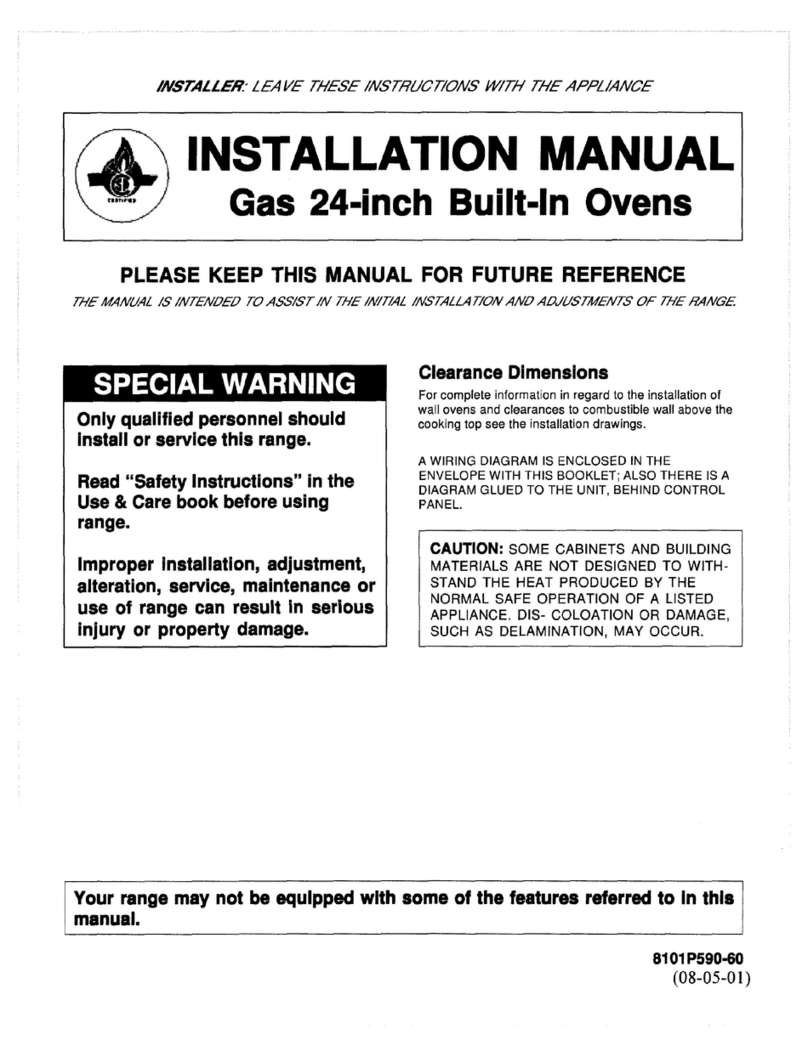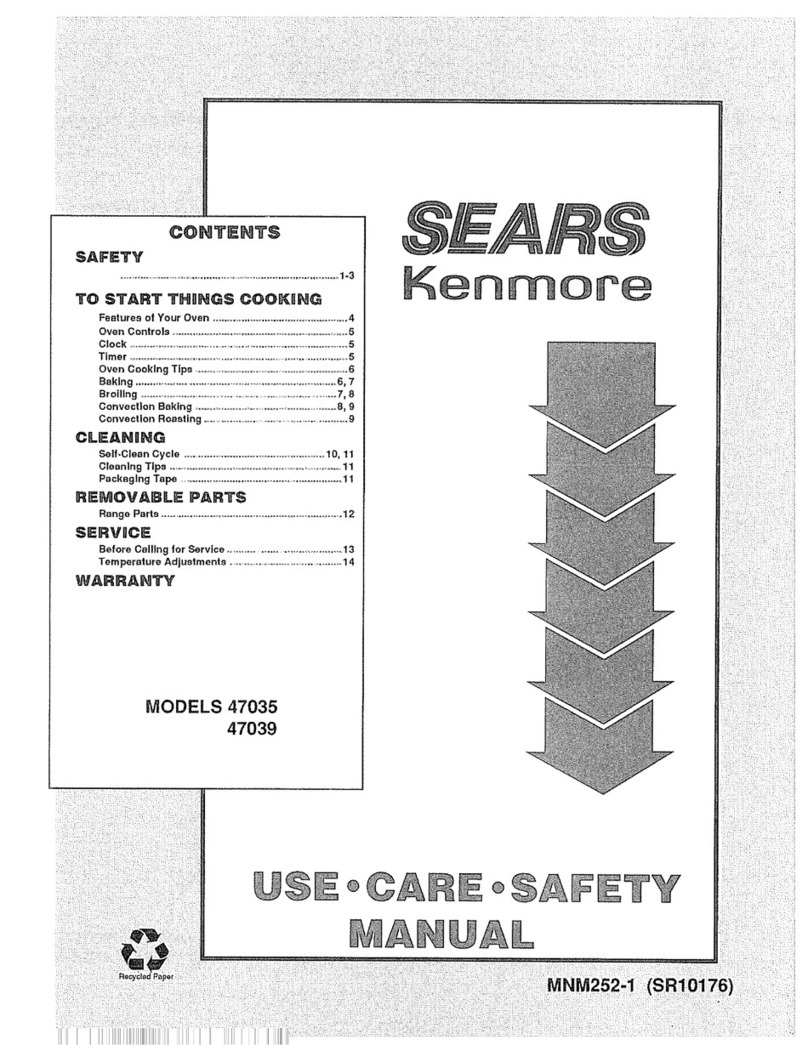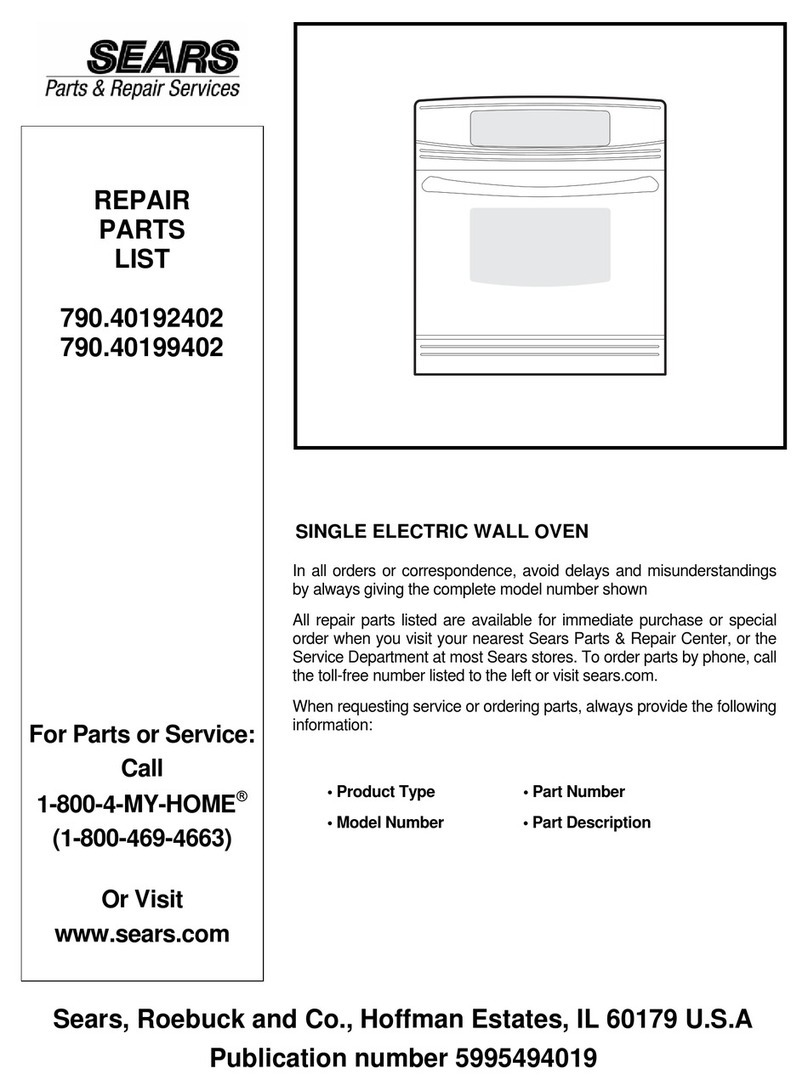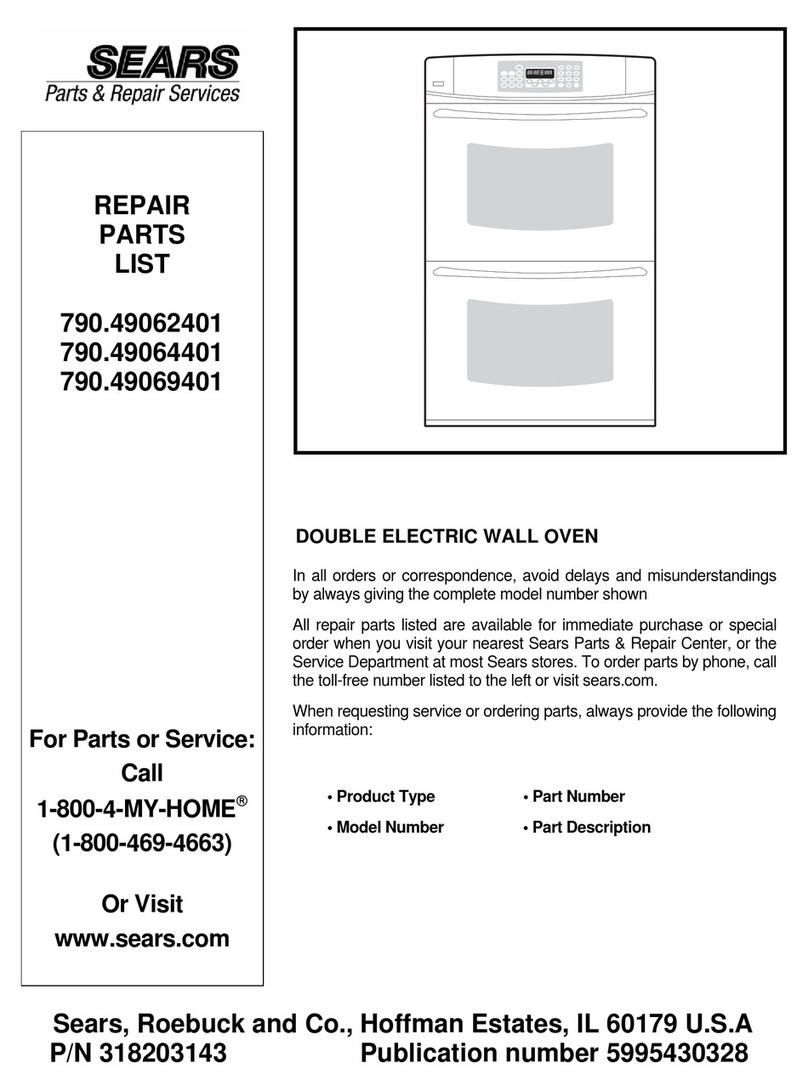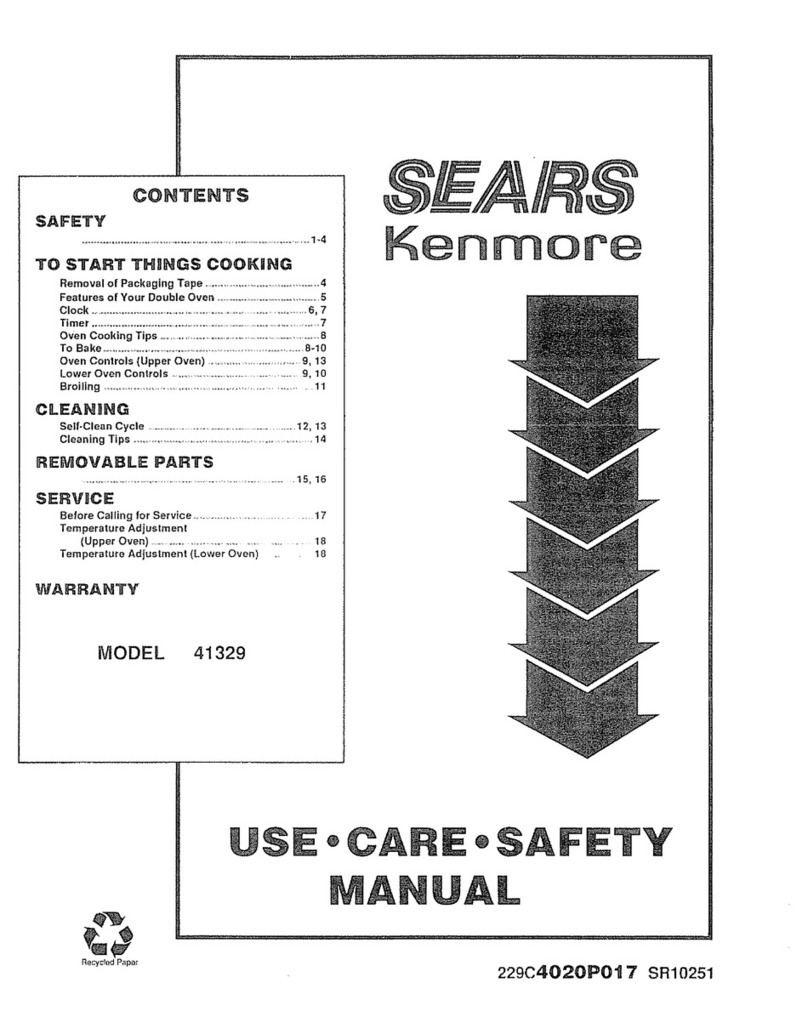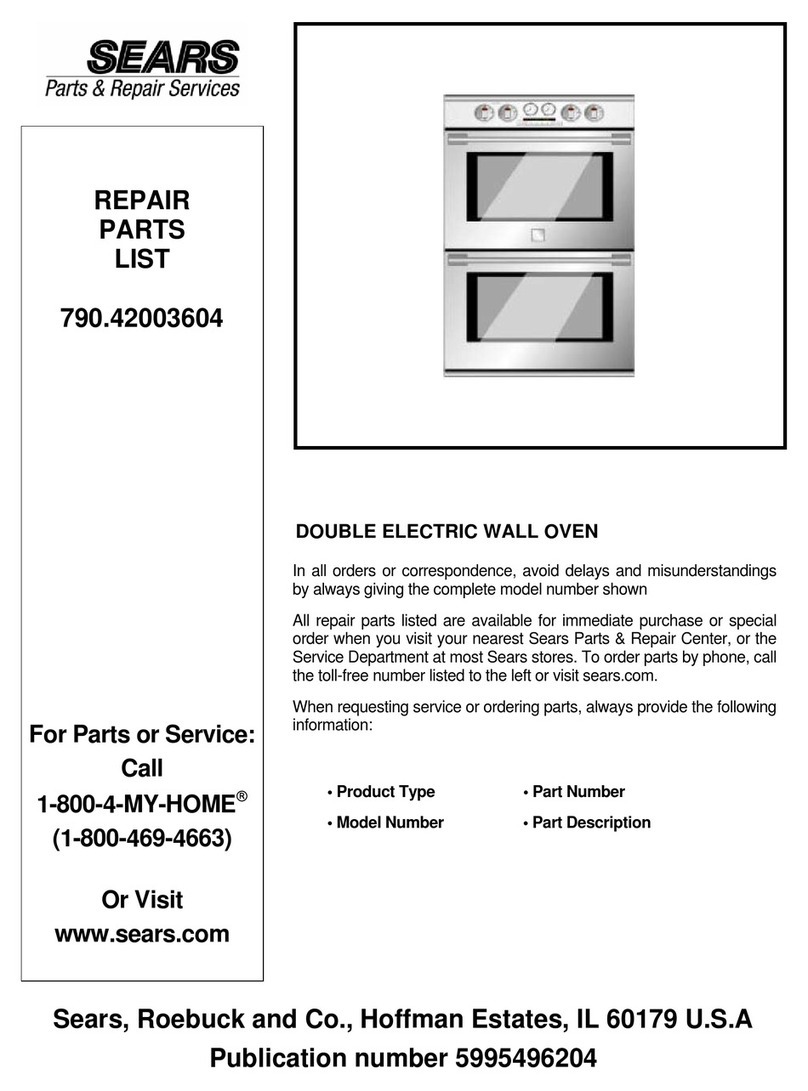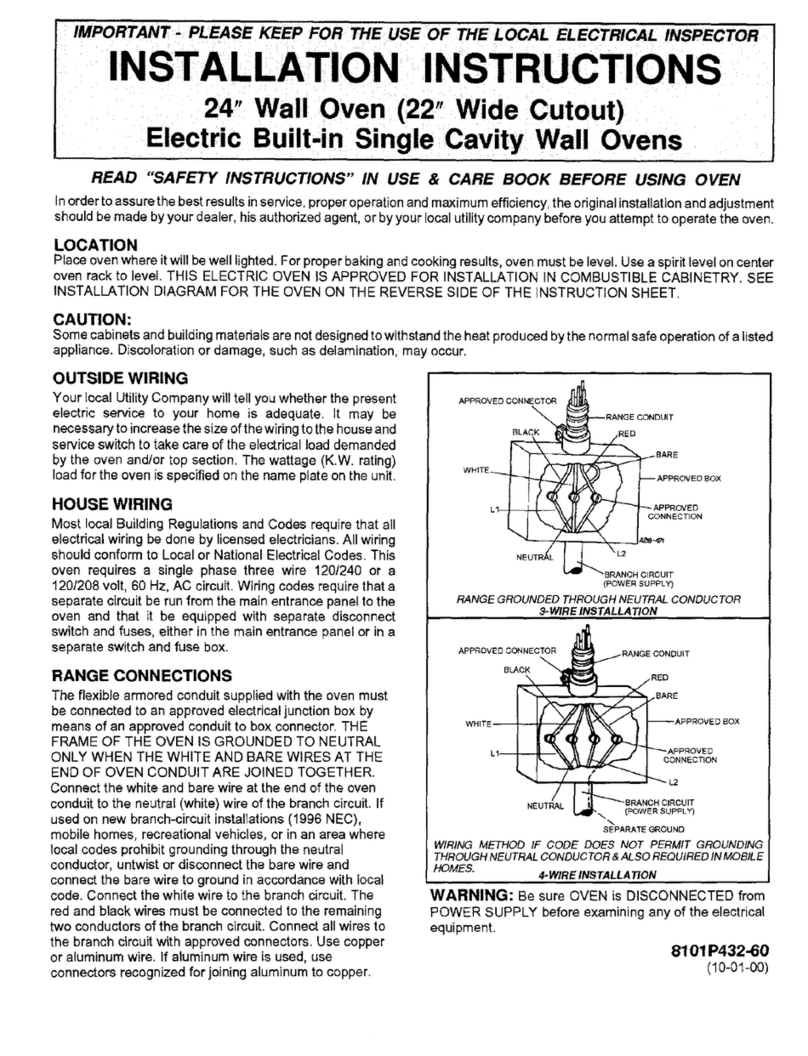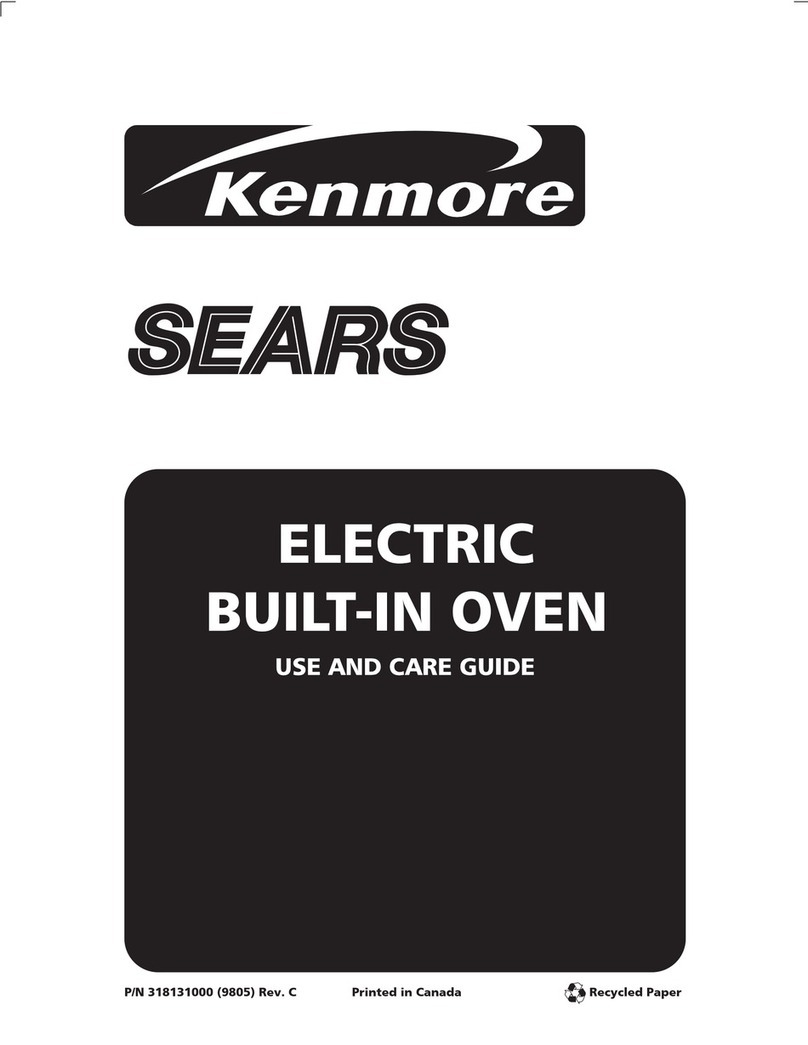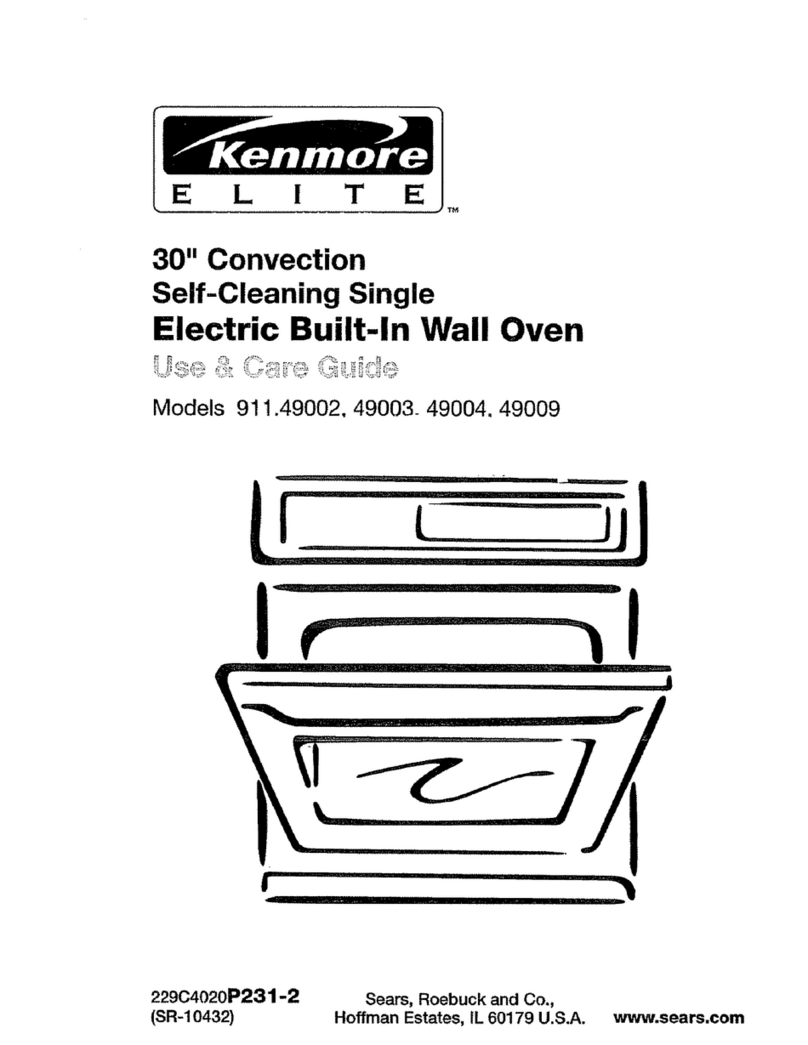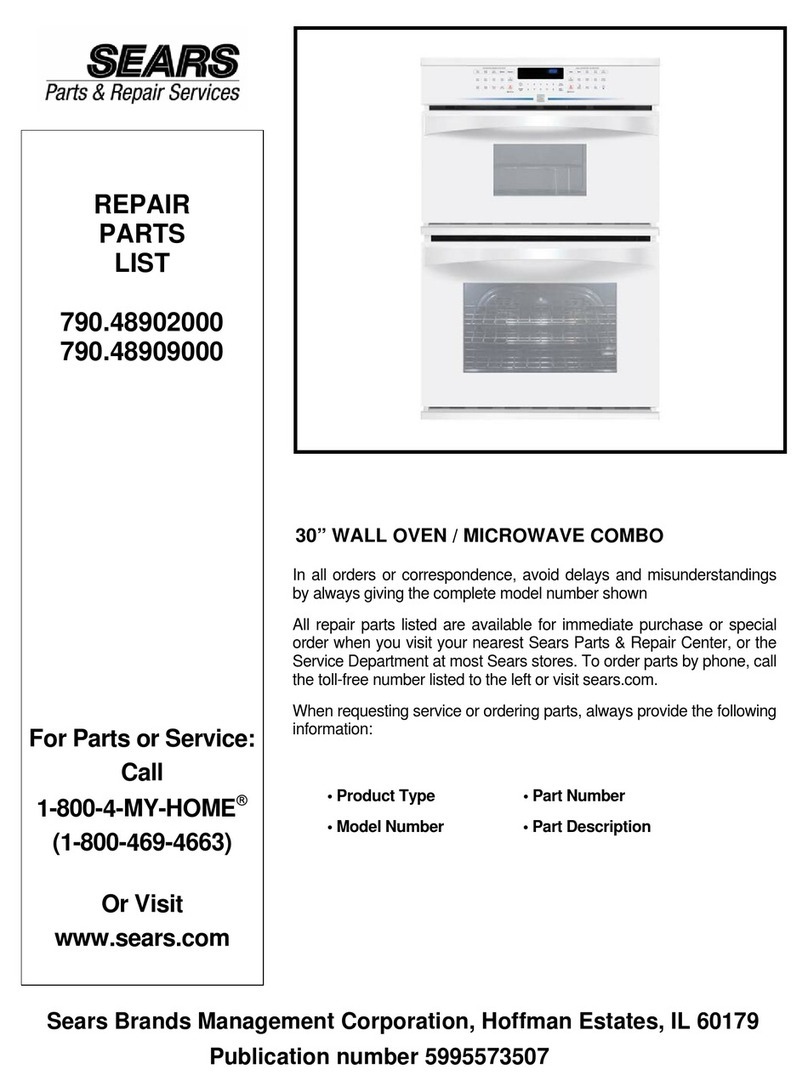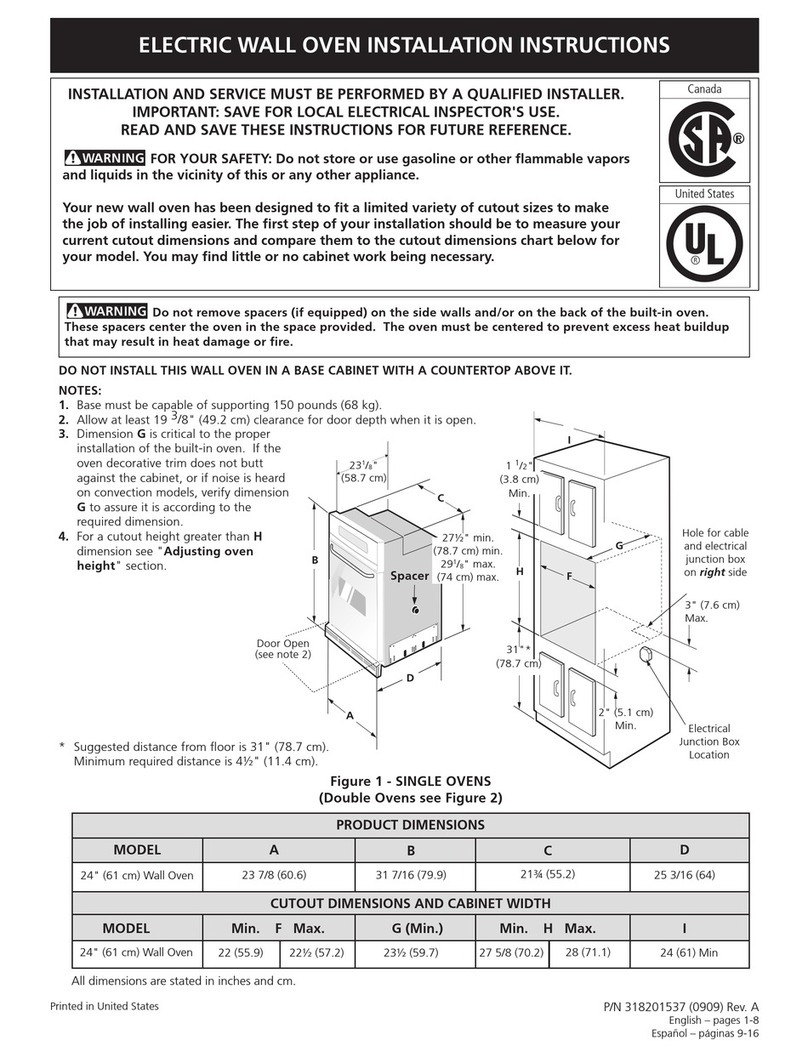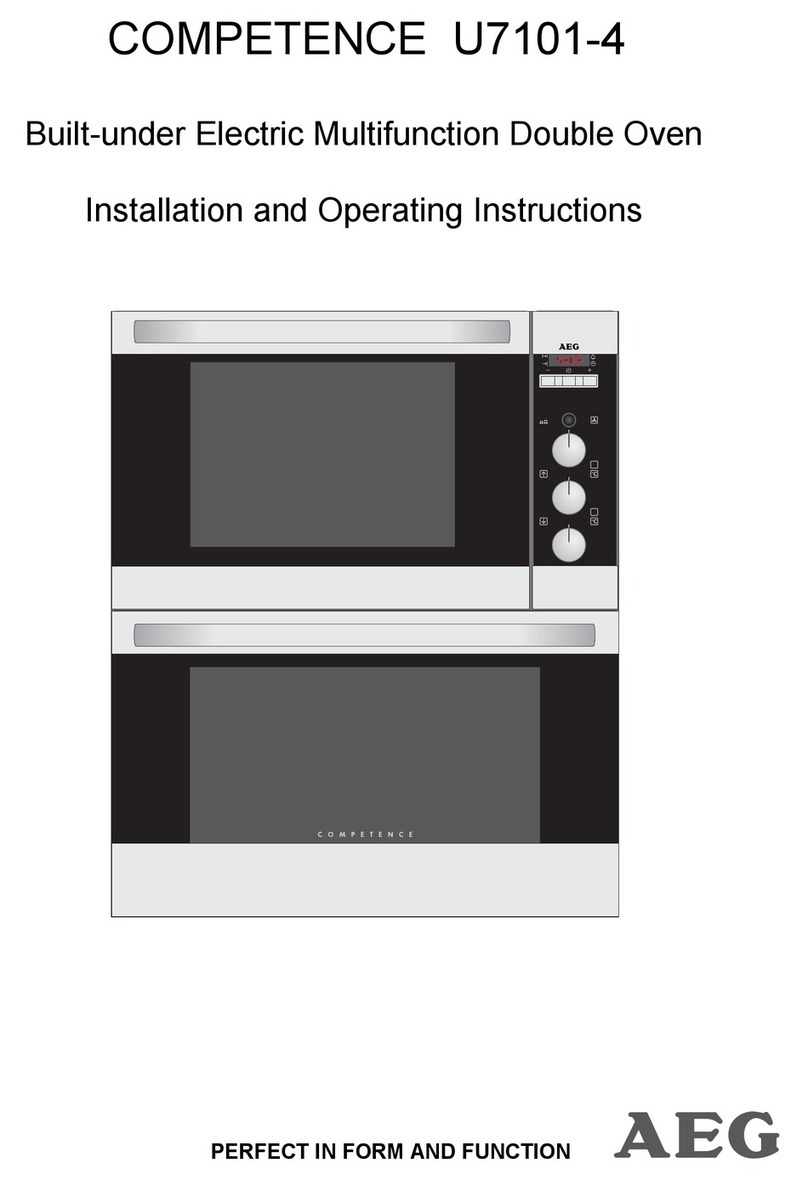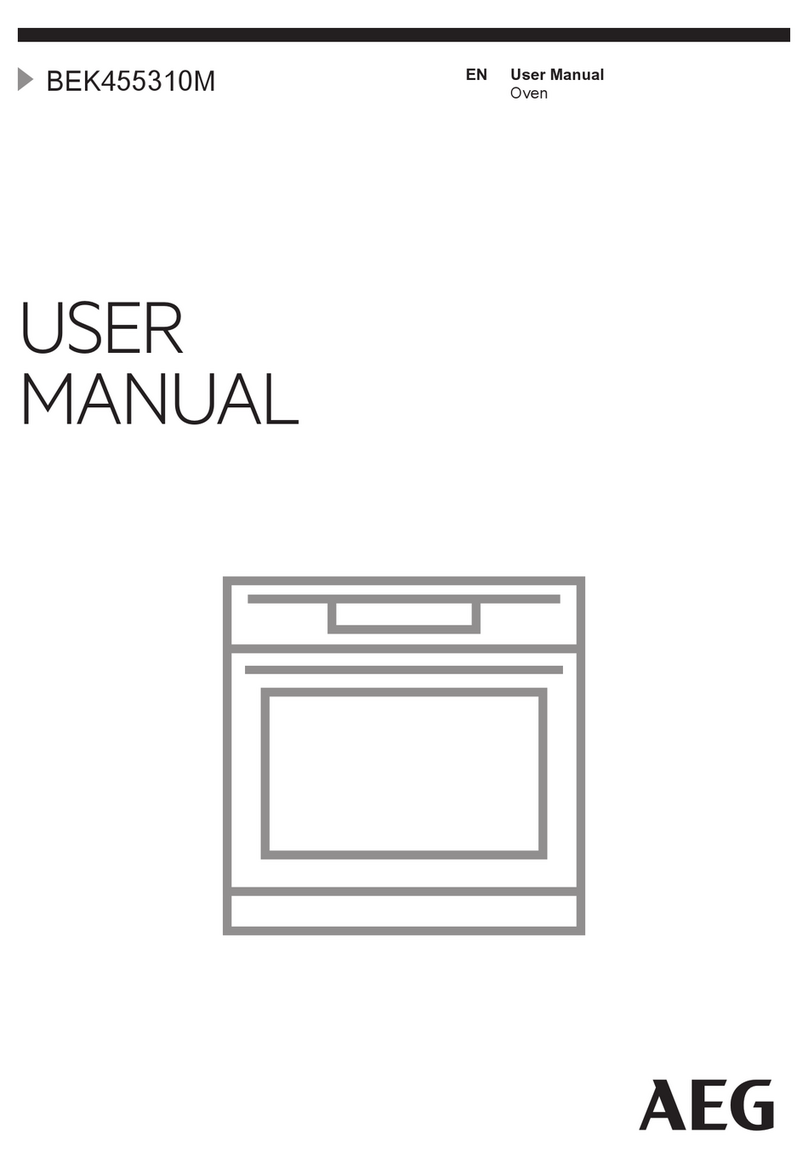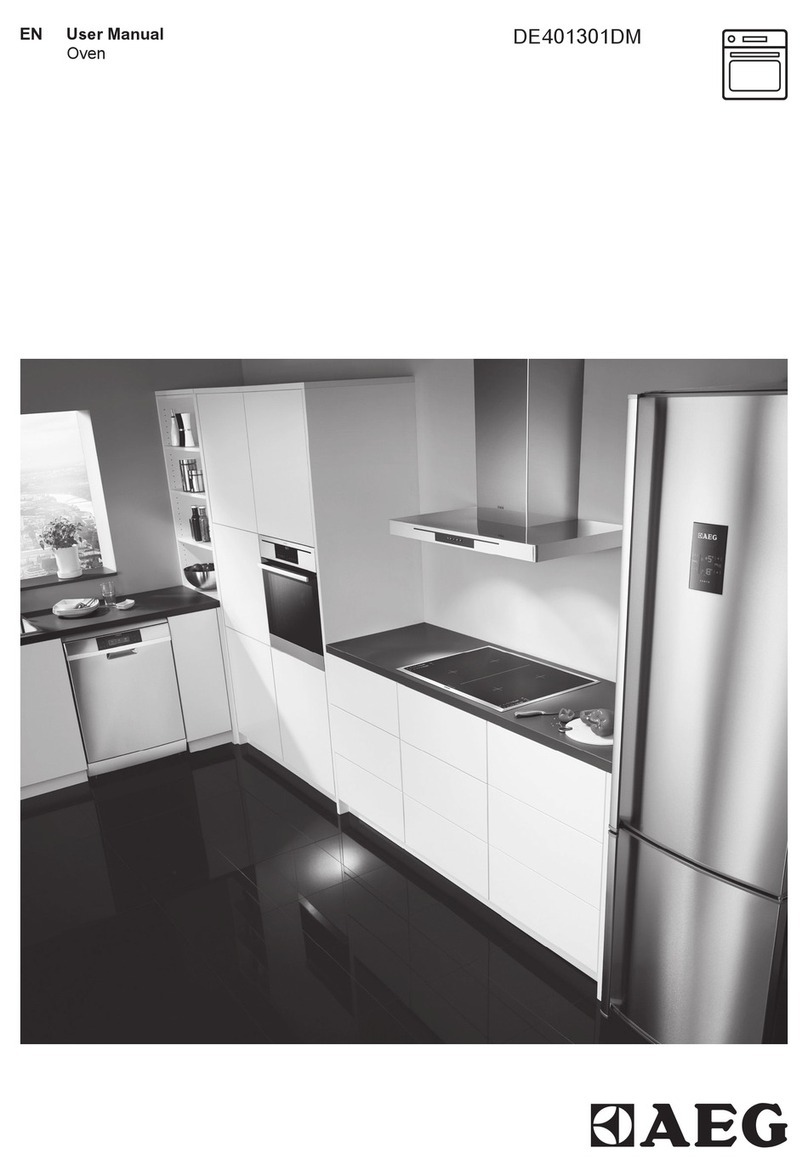
Always heat fat slowly andwatch asitheats,
o Use a deep-fat thermometer whenever possi-
ble to prevent overheating fat beyond the smok-
ing point.
oUse proper pan size. Avoid pans that are unsta-
ble or easily tipped Select cookware having flat
bottoms large enough to properly contain food
and avoid boilovers and spillovers and large
enough to cover burner grates. This will both save
cleaning time and prevent hazardous accumula-
tions of food, since heavy spattering or spillovers
left on the range can ignite_ Use pans with han-
dles that can be easily grasped and wilt remain
cool,
o When using glass cookware, make sure it is
designed for top-of-
range cooking.
Keep aUplastics away
from the top burners.
o Do not leave plastic
items on the cook-
top--they may melt if left too close to the vent.
• Do not leave any items on the cooktop. The
hot air from the vent may ignite flammable items
and will increase pressure in closed containers,
which may cause them to burst.
o To avoid the possibility of a burn, always be
certain that the controls for all burners are at
the off position and all grates are cool before
attempting to remove them.
o When flaming foods are under the hood, turn
the fan off. The fan, if operating, may spread
the flames.
• If range is located near a window, do not hang
long curtains that could blow over the top burners
and create a fire hazard
o When a pilot goes out (on mode_s with stand-
ing pilots), you will detect a faint odor of gas as
your signal to relight the pilot, When relighting the
pilot, make sure the burner controls are in the off
position, and follow instructions in the Installation
Instructions to relight.
o If you smell gas, and you have already made
sure the pilots are lit (on models with standing
pilots), turn off the gas to the range and call a
qualified service technician Never use an open
flame to locate a leak,
Baking, Broiling and Roasting
oDo not use oven for a storage area. Items
stored in the oven can ignite.
o Stand away from the range when opening the
door of a hot oven. The hot air and steam that
escape can cause burns to hands, face and
eyes.
o Keep the oven free from grease buildup.
oPlace the oven shelves in the desired position
while oven is cool.
Pulling out the shelf to the shelf-stop is a
convenience in lifting heavy foods. It is also a
precaution against burns from touching hot
surfaces of the door or oven walls. The lowest
position "R" is not designed to slide.
Do not heat unopened food containers.
Pressure could build upand the container
could burst, causing an injury.
Do not use aluminum foil anywhere in the
oven except as described in this manual.
Misuse could result in a fire hazard or damage to
the range.
When using cooking or roasting bags in the
oven, follow the manufacturer's directions.
Use only glass cookware that is recommend-
ed for use in gas ovens.
Always remove broiter pan from the oven or
the broiler compartment as soon as you finish
broiling. Grease left inthe pan can catch on fire if
oven is used without removing the grease from
the broiler pan.
When broiling, if meat is too close to the
flame, the fat may ignite. Trim excess fat to pre-
vent excessive flare-ups,
Make sure the broiler pan is in place correctly
to reduce the possibility of grease fires,
If you should have a grease fire in the broiler
pan, turn the oven off and keep the broiler com-
partment door closed to contain fire until it burns
OUL
(continued next page)
